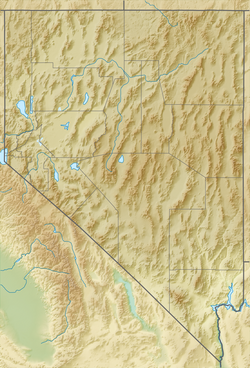| Last Chance Range | |
|---|---|
 Seen from Pahrump to the south | |
| Highest point | |
| Elevation | 1,519 m (4,984 ft) |
| Geography | |
| Country | United States |
| State | Nevada |
| District | Nye County |
| Range coordinates | 36°18′59.850″N116°5′23.111″W / 36.31662500°N 116.08975306°W |
| Topo map | USGS Last Chance Range |
The Last Chance Range is a mountain range in Nye County, Nevada. [1] It lies immediately north of Pahrump, Nevada, and west of Nevada State Route 160.
